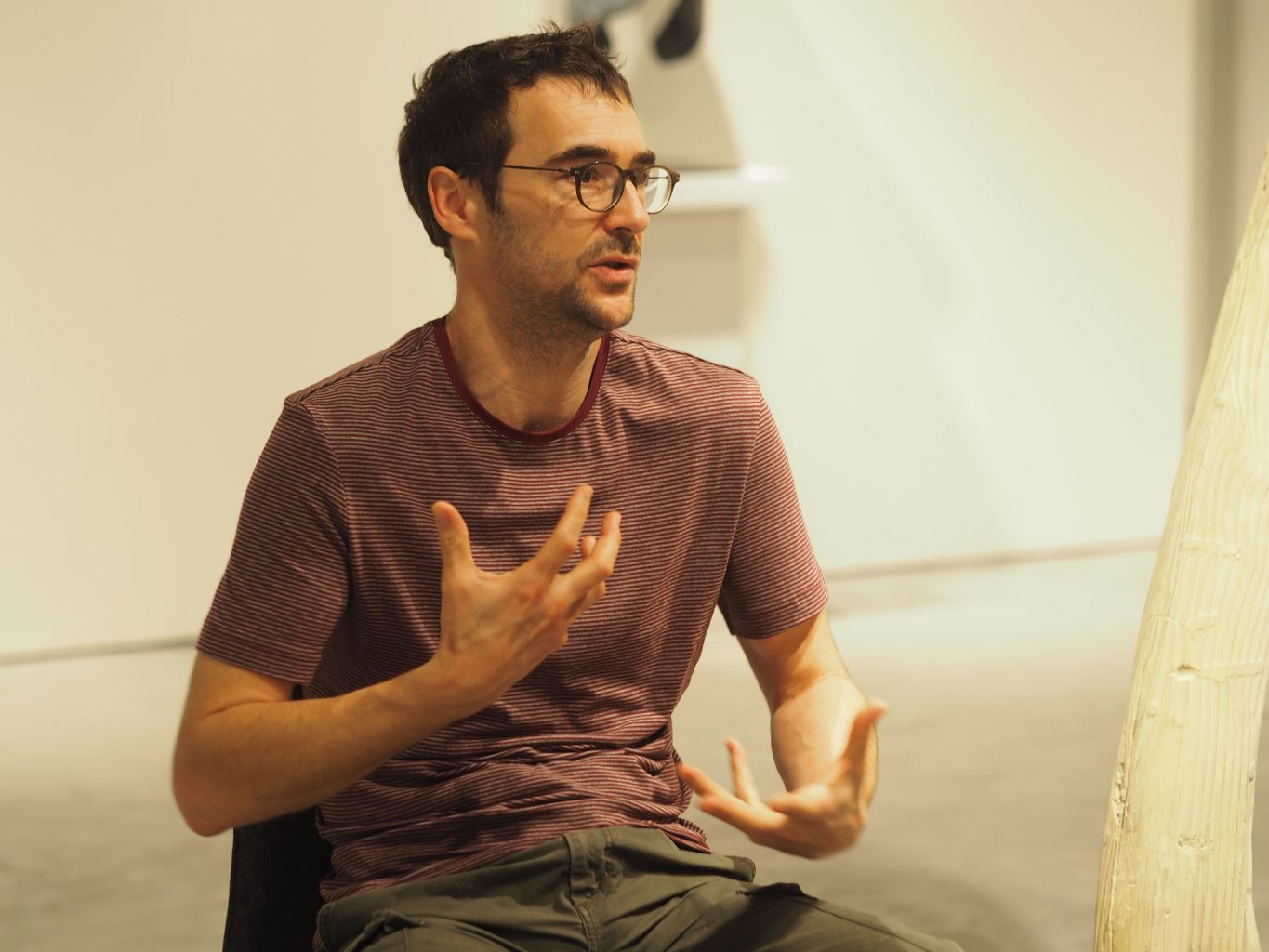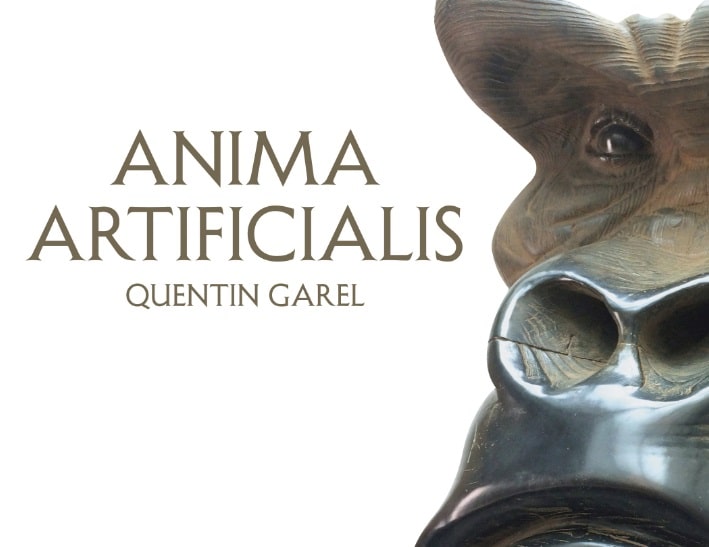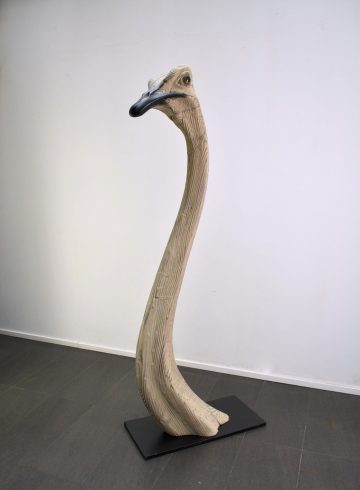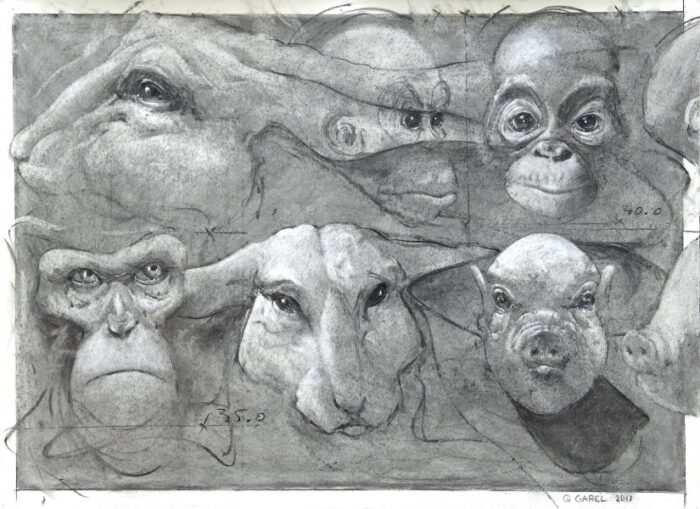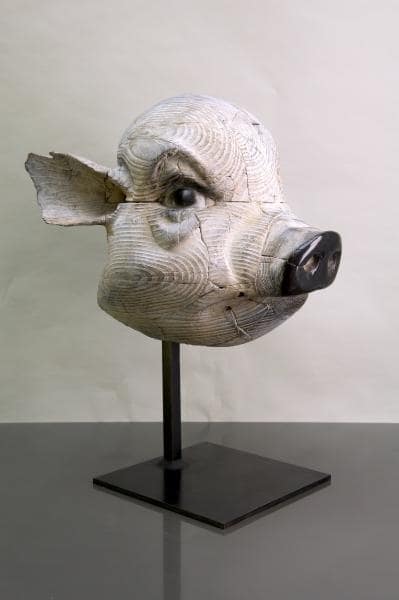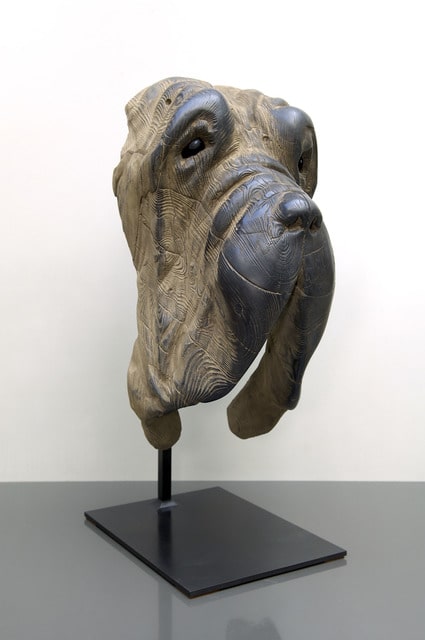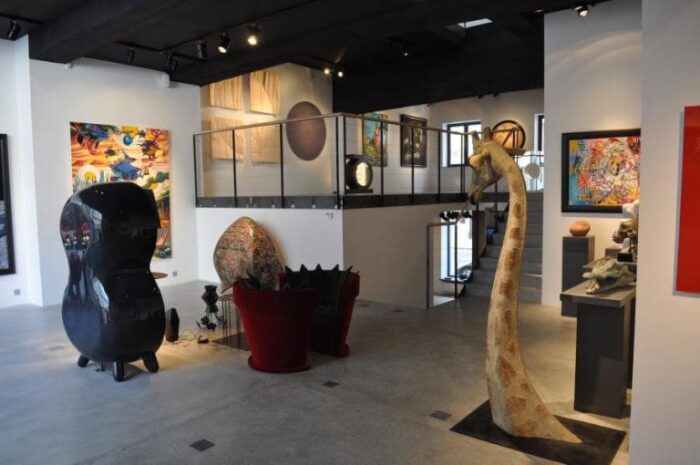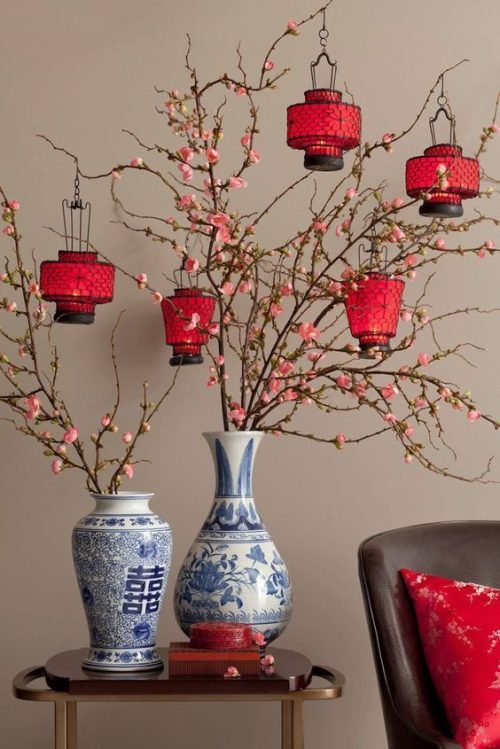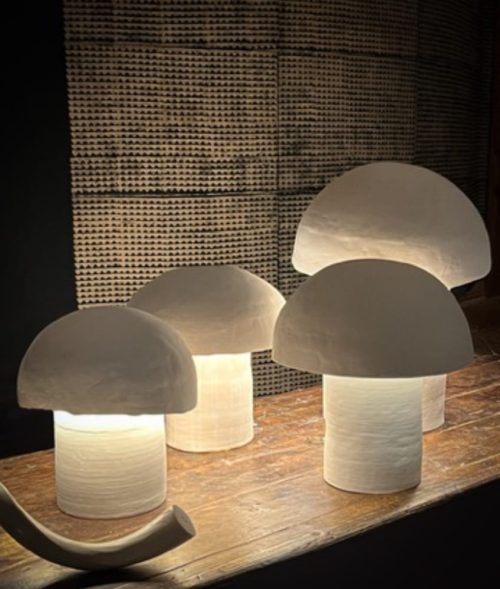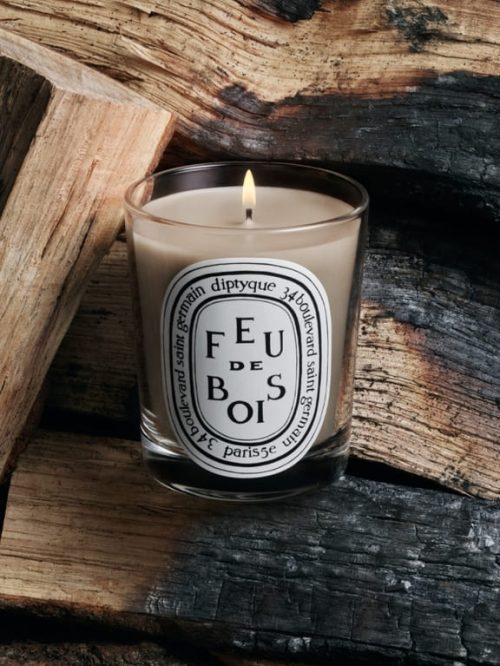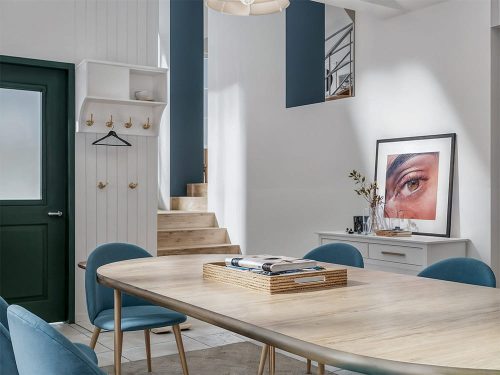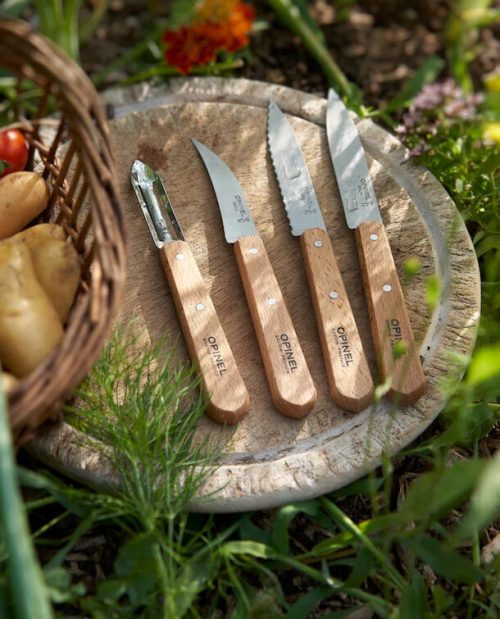So Chic Stories
Explore the animal kingdom at “Anima Artificialis”: Interview with Quentin Garel
- - Home & Decor
I have been working with the animal figure for about twenty years now and I have taken great pleasure in developing it. There was this attraction for African figures, archaeology and natural history museums. I like to disturb the gaze to lose the spectator, create magic with the animal figure and give it a timeless and universal dimension. At the beginning it is wooden sculptures that are assembled, glued, pegged and cut with a chainsaw then I sand, paint and put plastic eyes.
I go a lot to zoos to draw, the internet also allows me to have additional images and then I also buy a lot of books on animals. Drawing is important because it allows me to imagine staging and to anticipate the assembly of the pieces of wood.
It evolved little by little, at the beginning from doing a lot of ceramics, especially at the Beaux-Arts in Paris, and when I left, I did a residency at the Casa Velázquez in Madrid. I went there with the desire to develop my work on the animal figure and I was looking for foundries but it was a little expensive and I was not yet ready. It so happens that in Madrid a lot of wood was recovered because it was a time when they were redoing the floors, when they were renovating the old one. So, we found huge wagons filled with wood that I was collecting with my little truck and that’s how I came up with the idea of assembling the wood with small electric chainsaws. At first the technique was not perfect, it broke and little by little I improved the system, I was able to do bigger and more complicated things. The important topic of my work is the relationship between the object, the material and the subject, the animal figure.
I like ostriches but also monkeys because they have something of us. I like to look at people and compare them to animals. It is true that we remain mammals, innocent animals while bending to social rites that make us behave in a certain way.
That’s a good question, maybe I should go see a psychologist (laughs). I also think that animal sculpture is very connoted, often these are hunting scenes representing the domination of man over animal. At the beginning, I approached this subject via hunting trophies, to highlight man’s pride in wanting to dominate nature and express his courage. I have always had problems with authority at school and any form of domination makes me angry whether it is from men over women, politics or in the corporate world. The animal was a pretext to express this, to talk about man in a roundabout way, using the animal like Jean de La Fontaine or Aesop did. The fact of treating that with the head can unconsciously reflects a human dimension because these animals speak of us whether it is pride, pretense, ridicule. I hope that we perceive this double game, the beauty of the material in the service of the subject but also a satirical and ironic dimension.
I worked with a lot of wood, but also with bronze, which allows me to increase the number of works and participate in more exhibitions. Wood carvings also take me longer and are more sensitive to weather conditions. In this exhibition, all the sculptures are made of bronze except one which is made of wood, it is up to you to find it. Otherwise, for monumental sculptures I use polystyrene, there are very hard categories designed for foundry that can be cut, which makes it possible to do monumental things that are easy to handle. There is also the ceramic that I continue to use, we made calf heads but I also use it for the teeth of animals. I also work with aluminium, iron casting, and several types of metal alloys.
For example, a piece like the ostrich takes ten days to make, it’s quite fast. Larger sculptures like the giraffe, the elephant, it may take three weeks up to a month. And small works like the pig takes three to four days. For bronze, you have to make a silicone mold and then use the lost wax technique, which is an old technique. The wax is poured into the mold, then a refractory cement is placed around it and this is where the molten bronze is poured to replace the wax and to get the desired shape.
I live in Paris, I have a small workshop that allows me to make bases, drawings, and design steps. And half the year I’m in my workshop in Normandy, it’s a huge factory and that’s where I make a lot of noise and dust with my chainsaw (laughs).
I spend about eight hours a day in my workshop except on Saturdays and Sundays.
I had the opportunity to collaborate with a French publisher who works a lot with Chinese artists, we developed several large hammered metal sculptures as part of a Sino-French project. In Singapore, this is the first time I’ve done a solo exhibition.
In Singapore, there is an architectural demonstration, an illustration of the trophies of success. Nature is very present, there is the Botanic Garden that I saw yesterday. It looks a little like the French gardens, everything is in order. It’s incredibly clean when compared to my workshop full of dust (laughs). What I appreciated was also the kindness towards differences, there is a certain balance, especially towards religions with all these temples, these churches…
Anima Artificialis means in Latin artificial animals, in relation to the fact that they are represented animals. But there is also a notion of diverting the subject and the material as it is bronze and not wood.
In the Chinese New Year calendar, last year was the year of the dog, it was a little wink to integrate this work into the geography of the exhibition, to play with the local terroir. And he has a good face, he stages the laws of universal gravity well with his skin falling off. This year, it is the year of the pig and there is a pig sculpture too
I would like people to leave here in awe, to be curious about this work. But I would also like to raise questions about what man is doing to animals. Among all the animals I have carved, there are already two that are endangered species and I would never have imagined 20 years ago that gorillas and rhinos were affected. You know, there is more genetic complexity in a Geranium leaf than in an iPhone. If this work can help to raise awareness of man’s domination over nature, I would be happy to do so.
India! India! I really liked this melting pot, there is a balance that expresses itself, a respect for nature despite the pollution. In Asia, there is generally a wealth of sculptures in India, Japan and China. If I could collaborate with stonemasons in India I would be delighted, there are things to do around the animal figure.
Yes, there is Nicolas Darrot who is an artist sculptor with whom I was at the Beaux-Arts de Paris. François Weil is a sculptor who makes huge stones fly. Then there are artists who influenced me like Winsor McCay, the draftsman of Little Nemo, but also contemporary artists like Panamarenko, the Belgian who builds machines between Leonardo da Vinci and Gaston Lagaffe. It is true that today many projects are linked to meetings and collaborations.
Almost everywhere, I started collaborating with galleries in the United States, Canada, Europe and Asia now with Singapore, projects in China and Japan.
